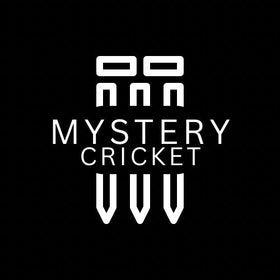What Is the Sheffield Shield in Australian Cricket?

In Australian cricket, few competitions carry the weight, tradition, and respect of the Sheffield Shield. Often called the beating heart of domestic cricket, it is the longest-running first-class competition in the country and a critical part of Australia’s sporting identity. For more than a century, the Shield has stood as the proving ground for cricketers aiming to wear the Baggy Green, producing generations of Test legends who cut their teeth in its demanding contests.
While the glamour of international cricket and the entertainment of the Big Bash League attract global attention, the Sheffield Shield remains a purist’s competition. It is where technique, patience, and consistency are truly tested across four-day matches, replicating the demands of Test cricket better than any other format.
This article explores the history of the Sheffield Shield, from its beginnings in the 19th century to its modern role in Australian cricket. We will cover how the competition is structured, why it holds a special place in cricket culture, and the great players and moments it has produced. Along the way, we will see why the Shield continues to matter, even in an era dominated by fast-paced limited-overs cricket.
Where It All Began
The Sheffield Shield began in the summer of 1892–93, making it one of the oldest domestic cricket competitions in the world. Its creation stemmed from the desire to provide a structured, high-quality first-class competition that would develop Australian players and strengthen the nation’s cricketing profile.
The competition was named after Lord Sheffield, a wealthy English cricket patron who toured Australia with a team led by W.G. Grace in 1891–92. To encourage the growth of the game in Australia, Lord Sheffield donated £150 towards the establishment of a domestic competition. The silver trophy that bears his name became the symbol of Australian first-class supremacy.
At the outset, the Sheffield Shield was contested by three states: New South Wales, Victoria, and South Australia. These were the founding pillars of the competition, and their rivalries became central to the story of Australian cricket. Matches were typically played in a round-robin format, with the team finishing on top crowned the champion.
Over time, the competition expanded as other states developed cricketing infrastructure and talent. Queensland joined in 1926, Western Australia in 1947, and Tasmania in 1977, creating the six-team structure that endures today.
From humble beginnings with just a handful of fixtures each season, the Shield has grown into a fully professional competition. Yet its essence remains the same: a tough and prestigious test of a cricketer’s ability.
How the Competition Works Today
Today’s Sheffield Shield is contested by six state teams: New South Wales, Victoria, South Australia, Queensland, Western Australia, and Tasmania. These sides represent the core of Australian domestic cricket and feed directly into the national team.
The Shield follows a round-robin format, with each team playing both home and away fixtures during the Australian summer. Matches are played over four days, aligning closely with the demands of Test cricket and offering batters and bowlers alike the opportunity to demonstrate skill, endurance, and consistency.
The points system encourages positive cricket. Teams are awarded points for wins, draws, and first-innings leads, with bonus points for batting and bowling performances within the first 100 overs of each side’s first innings. This structure ensures that matches remain competitive and discourages overly defensive play.
At the end of the season, the two highest-ranked teams qualify for the Sheffield Shield final. Unlike many domestic competitions, the final is hosted by the team that finishes first on the ladder. If the final ends in a draw, the host is awarded the Shield, rewarding consistent performance across the season.
The competition usually runs from October to March, sitting alongside Australia’s international schedule and the Big Bash League. While the BBL draws bigger crowds and wider media attention, the Shield is still regarded by players and coaches as the true test of readiness for international cricket. For Australian selectors, strong Shield performances often carry more weight than flashy Twenty20 heroics.
Why It’s Special: The Sheffield Shield’s Place in Cricket Culture
The Sheffield Shield occupies a unique position in Australian sport. While limited-overs formats generate buzz, the Shield is revered by traditionalists and professionals for its ability to mirror Test conditions.
It is the longest-running domestic competition in Australian cricket, and its history is woven into the story of the nation’s rise as a cricketing powerhouse. Every generation of great Australian players has been shaped by its grind, and winning the Shield remains a badge of honour for state sides.
For players, the Shield is often viewed as the true test of skill and temperament. Performances in this competition are scrutinised closely by national selectors. A double century or a five-wicket haul in the Shield carries far more significance than similar feats in white-ball cricket. For many aspiring cricketers, making a mark in the Shield is the final step before international recognition.
The rivalries between states also add cultural richness. New South Wales and Victoria, the two most successful teams, have a fierce and historic rivalry. Matches between Queensland and New South Wales are similarly heated, with passionate crowds and intense competition. These rivalries give the Shield emotional weight that transcends statistics.
For fans, the competition is a reminder of cricket’s traditional values: patience, skill, and resilience. While crowds are smaller than in other formats, Shield cricket continues to hold a respected place in the Australian summer.
Legends Forged in the Sheffield Shield
The Sheffield Shield has been the launchpad for virtually every Australian cricket legend. From the era of Sir Donald Bradman to modern stars like Steve Smith, the Shield has consistently produced world-class players.
Bradman’s astonishing feats in Shield cricket for New South Wales and later South Australia set records that still inspire awe. His dominance against state-level opposition foreshadowed his unmatched Test career.
In later decades, the Shield provided the stage for the emergence of Shane Warne, whose leg spin for Victoria dazzled domestic audiences before terrorising international batsmen. Similarly, Ricky Ponting made his name with Tasmania, demonstrating the batting prowess that would make him one of the great captains of world cricket.
Modern Australian heroes such as Steve Smith, Pat Cummins, and David Warner have all come through the Shield ranks. The competition allows selectors to see whether emerging players can succeed across four days, handle different pitch conditions, and adapt to pressure.
Beyond individuals, the Shield has produced countless memorable innings, marathon bowling spells, and record partnerships. Each state has its own legends who, even if they never became household names internationally, are celebrated in their regions for Shield heroics.
Historic Moments and Records
Over more than a century, the Sheffield Shield has witnessed countless historic moments and record-breaking feats.
-
Highest Team Scores: New South Wales, Victoria, and Queensland have all posted totals in excess of 700, showcasing the depth of batting talent in the competition.
-
Individual Records: Don Bradman’s batting averages and Allan Border’s run tallies stand as milestones that underline the competition’s quality.
-
Bowling Feats: Spin and pace have both thrived. Bowlers like Clarrie Grimmett, Shane Warne, and Glenn McGrath sharpened their skills in the Shield before dominating the world stage.
When it comes to overall dominance, New South Wales leads the way with more than 45 titles. Victoria follows with over 30, while Queensland, Western Australia, and South Australia have also enjoyed periods of success. Tasmania, the most recent addition, claimed its first Shield in 2006–07, a historic achievement for the state.
Milestone matches, such as centenary finals and record-breaking partnerships, are celebrated not just for their numbers but for their contribution to cricketing folklore. For historians and fans, the Shield’s records offer a window into how Australian cricket has evolved through different eras.
Sheffield Shield vs Other Domestic Competitions
Every cricketing nation has its own domestic competitions, but the Sheffield Shield stands apart.
Compared with England’s County Championship, the Shield features fewer teams and matches, ensuring higher intensity. County cricket has a longer season and a larger pool of players, but some argue its quality is diluted by the volume of fixtures. The Shield, with only six state sides, concentrates talent and maintains a consistently high standard.
In India, the Ranji Trophy involves far more teams, reflecting the country’s size and depth. While it produces international stars, the sheer number of participants means the standard varies widely. The Sheffield Shield’s compact nature ensures that virtually every fixture is contested by players capable of representing their country.
What makes the Shield unique is its direct pathway to Test cricket. Australian selectors rely heavily on Shield performances when picking squads, whereas in other countries, T20 or one-day tournaments sometimes overshadow red-ball domestic cricket. The Shield remains the gold standard for producing Test-ready players.
Modern Challenges and the Future of the Shield
Despite its history and prestige, the Sheffield Shield faces challenges in the modern cricket landscape.
The rise of the Big Bash League and other global T20 competitions has shifted attention and resources towards the shorter formats. T20 matches draw larger crowds, higher broadcast ratings, and bigger sponsorship deals. By comparison, the Shield often struggles to attract spectators, with many matches played in near-empty stadiums.
However, television and streaming platforms have helped keep the competition visible. For serious cricket fans and selectors, the Shield remains essential. Its ability to prepare players for the rigours of Test cricket cannot be replaced by limited-overs formats.
Scheduling is another challenge. With the international calendar packed, finding space for a full Shield season alongside the BBL and international tours is increasingly difficult. Yet Cricket Australia continues to prioritise the Shield because of its role in maintaining Australia’s dominance in Test cricket.
Looking forward, the Shield’s survival depends on striking a balance between tradition and modern demands. While it may never rival the Big Bash in popularity, its role as a nursery for Test stars guarantees it a future in Australian cricket.
Sheffield Shield at a Glance
| Category | Details |
|---|---|
| Founded | 1892–93 season |
| Donor | Lord Sheffield (after the 1891–92 England tour) |
| Current Teams | 6 (New South Wales, Victoria, South Australia, Queensland, Western Australia, Tasmania) |
| Format | Round-robin + Final (4-day matches) |
| Season | Australian summer (October–March) |
| Most Titles | New South Wales (45+) |
| Other Successful Teams | Victoria (30+), Queensland, Western Australia |
| First Winner | Victoria |
| Recent Champions | Western Australia (back-to-back titles 2022 & 2023) |
| Famous Alumni | Don Bradman, Allan Border, Shane Warne, Ricky Ponting, Steve Smith, Pat Cummins |
| Records | Highest team scores over 700; Bradman’s batting dominance; marathon innings and long bowling spells. |
Conclusion: More Than Just a Trophy
The Sheffield Shield is more than a piece of silverware. It is the foundation of Australian cricket, a competition that has tested and shaped every great player the nation has produced. From its beginnings in 1892–93 to its place in today’s crowded cricket calendar, the Shield has remained the ultimate domestic challenge.
While modern cricket continues to evolve, the Shield retains its special status as the competition that forges Test players. It is respected by cricketers, selectors, and fans who understand that four-day battles build the resilience needed for international success.
The Sheffield Shield endures because it is more than just a domestic tournament. It is where the future of Australian cricket is written, season after season, in the long shadows of tradition and excellence.





Leave a comment